Thanh Hoa – the cradle of VN civilization
The God Fish Stream
The God Fish Stream is a fascinating tourism destination in Cam Luong commune, Cam Thuy district, Thanh Hoa province.
This has been around for a thousand years under the base of Truong Sinh Mountain. The place does not only draw travelers because of the majestically natural scenery with the high mountains, long rivers and a huge forest, but is also known for a special type of fish in the stream. \No one in the immediate area knows exactly what type of fish it is, but it is called The God Fish due to many mystical stories of these special creatures.
The local people believe that the fish can bring misfortune to those who dare to catch and eat them; therefore, they protect the fish carefully and never dare to catch them.
In addition, this area is an interesting destination with many religious and cultural attractions. Besides the temple that local residents construct to worship the God Fish, there is also another pagoda in the area named Snake God Pagoda.
The old stories say that on a specific day during the year, the snakes come to this stream and protect the fish, so the people in this area have built a pagoda for these snakes as well to appreciate their work and also pray for a peaceful life.
The area also has a considerable number of Muong people, which give visitors the chance to understand more about the culture of this ethnic group by participating in their traditional activities such as Pon Pong Dance, brocade textile or pipe wine.
 |
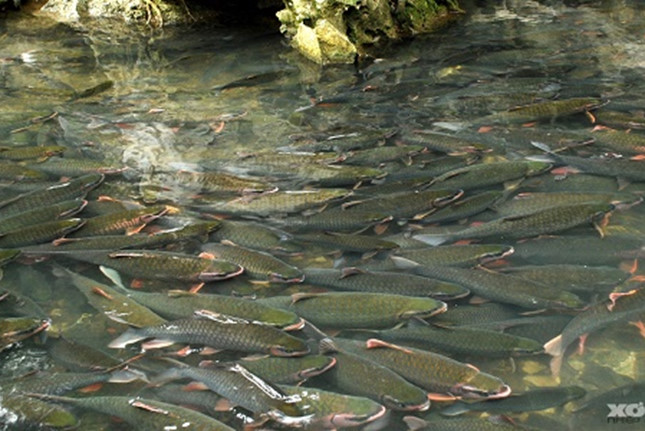 |
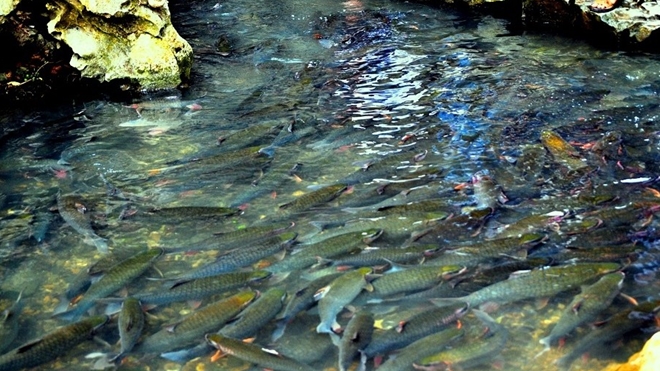 |
Hai Hoa Sea
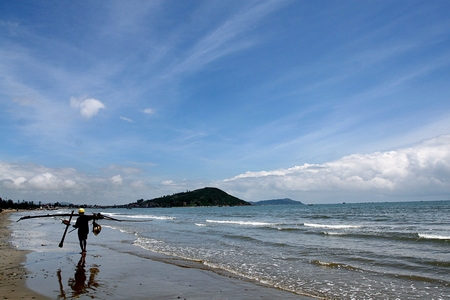 |
 |
The cave is named after this rock, as “Ngoc” literally means “pearl” in Vietnamese. Next to Ngoc Cave lies Can Cave, where the visitors can see all of Ben En area from the top.
Ho Dynasty Citadel - World Cultural Heritage
 |
This monument is a rare intact stone citadel in Vietnam, the only one in Southeast Asia and one of the few surviving stone castles in the world. After six centuries, the citadel is still stable with some intact portions of the walls.
It is surprisingly said that Ho Dynasty Citadel had been built in only three months from January to March 1397. This citadel used to be the capital of both Dai Viet nation during the final years of Tran Dynasty and Dai Ngu nation for seven years.
It was officially named “Tay Do” (Western Capital) in order to distinguish from Thang Long – Dong Do Citadel (Eastern Capital). Ho Citadel is the only stone one in Vietnam constructed during a short period of time. It includes two layers: the inner called “Hoang Thanh” built with stone and the outer called “La Thanh” built with soil.
The outstanding feature of Ho Dynasty Citadel is that its stone walls were built to bear earthquakes with an average height of five meters. It is strange that the stones were laid without cement, each of them weighing up to 20 tons.
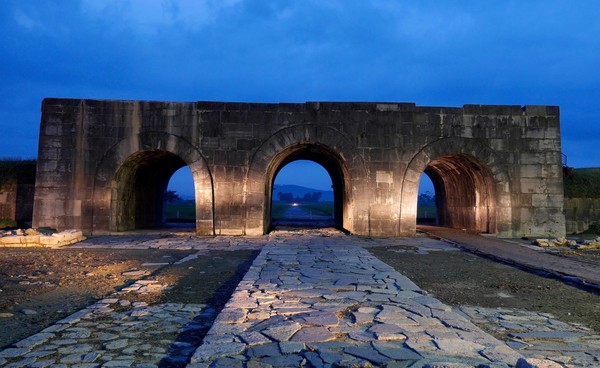 |
Ho Dynasty Citadel was the symbol of power and military fortress. It was also built to represent both royalty and divine powers. It helped to link natural and human space. Time and weather cannot damage the major stone sections because of the citadel’s unique construction techniques.
In addition to visiting the gates, and the wall, you can visit the Museum of the Ho dynasty, the temples to understand the building's history. Peanut candies and Vinh Loc tea are also interesting options for you to enjoy the historic stories about a mysterious dynasty.
If visiting in harvesting season, you can enjoy a great scene with bright yellow paintings inside the 600 year old citadel. The straight path and the ancient wall will give you a memorable photo opportunity. You should eat lunch at Vinh Loc to discover the land in the afternoon.
Sam Son
Traveling to Sam Son beach, tourists not only are strongly impressed by a long coastline of white sandy beach, plentiful scenes, and historical vestiges, but are also welcomed by friendly and hospitable people. Don't miss the chance to enjoy delicious specialties of the northern province of Vietnam here.
 |
Visitors will have some unforgettable moments when they wallow in the cool blue sea, listen to songs of the wave and the wind, and take a nap on the sunlight sandbanks or build sand castles. Also, this is a good place to try various local seafood varieties such as shrimp, crabs, and fish and to bring back home some nice souvenirs.
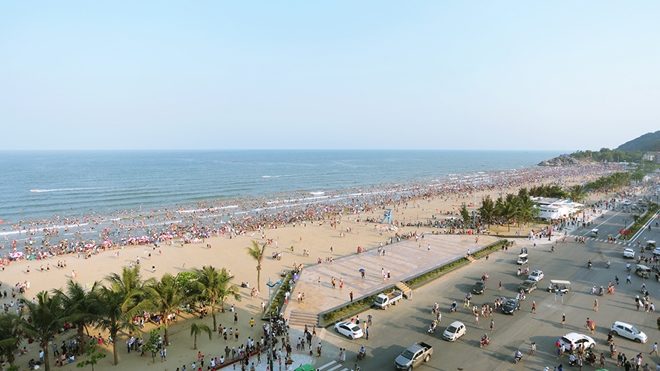 |
Besides the beaches, Sam Son also has another fascinating destination with many natural attractions and historical relics: the Truong Le Mountain range.
The part that is contiguous to the sea is called Co Giai Islet. On top of this islet, there is a small pagoda named “Doc Cuoc”, which means “One Leg”.
The pagoda is the place for the local people to recall the epic legend of a giant that manages to slay a sea monster and to guard the sea in the past.
Also, there is a special rock name “Trong Mai”, formed with two huge boulders on a flat rock. There is a story that these rocks represent a husband and wife, who love each other passionately even after both were transformed into birds.
Pu Luong Nature Reserve
Pu Luong is not only the habitat of plentiful of flora, but the living environment of many species of fauna as well. With an area of 17,662 ha, Pu Luong Nature Reserve is an ideal place for developing Vietnam tourism.
 |
The Nature Reserve is situated along two parallel mountain ridges running from the northwest to the southwest. In the middle of the nature reserve is a valley that separates into two parts. This valley contains the settlements of several local people and a large area of agricultural land.
Pu Luong is the habitat of plentiful of flora. It hasa primary forest, regarded as an evergreen tropical seasonal forest. A diverse flora covers the forest with at least 1,109 vascular plant species. Three primary forest subtypes found at the site also play an important role, including primary lowland forest on limestone and schist/shale, primary coniferous submontane forest on limestone and primary submontane forest on basalt.
 |
Pu Luong is also the living environment of total of 84 mammal species, in which there are 24 bat species, 162 bird species, 55 fish species, 28 reptile species, 13 amphibian species, 158 species of butterfly and 96 species of land snail. Here is an important place for the safeguarding of Delacour's Leaf Monkey.
Thanks to the variety of flora and fauna inside, Pu Luong Nature Reserve should be an ideal destination for tourists in Vietnam travel, especially for those who enjoy eco-tourism and adventure tours.

